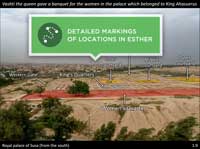A unique trip has come to my attention that I think might be of interest to some of you. Mark Wilson is leading it, which automatically makes it worthy of consideration, and it is a tour of the Roman sites in France and Spain. The trip is jointly sponsored by Tutku Tours and Biblical Archaeology Society, which tells me that the quality will be high. Here is a brief rundown of what they’re calling “To the End of the Earth: Paul’s Journey to Spain”:
- 14 days, inclusive of all travel (Sept 15-29, 2019)
- 3 flights: Paris-Lyon, Barcelona-Seville, Seville-Paris
- Visits to UNESCO World Heritage Sites: Orange, Arles, Tarraco, Merida, and Cordoba
- Tours of museums in Lyon, Arles, Narbonne, Tarragona, and Paris
- Biblical and early church connections include Paul’s potential visit to Spain, Irenaeus’s church in Pothinus, and the oldest Christian building in Gaul, the Basilica of St. Paul
- Roman connections include two temples of Augustus, the birthplaces of Seneca, Claudius, Trajan, and Hadrian
- In addition, you’ll see temples, theaters, amphitheaters, pyramids, triumphal arches, forums, mausoleums, nymphaeums, baths, necropolises, and synagogues.
- Plus, you get a free day in Paris, which I would recommend be used for a return visit to the Louvre!
I can’t think of a better trip to France and Spain for those interested in the ancient Roman and New Testament worlds. So if you have this on your bucket list, this may be your best opportunity. All the details are here (pdf).

The Saint-Bénézet bridge and the Popes’ Palace in Avignon

